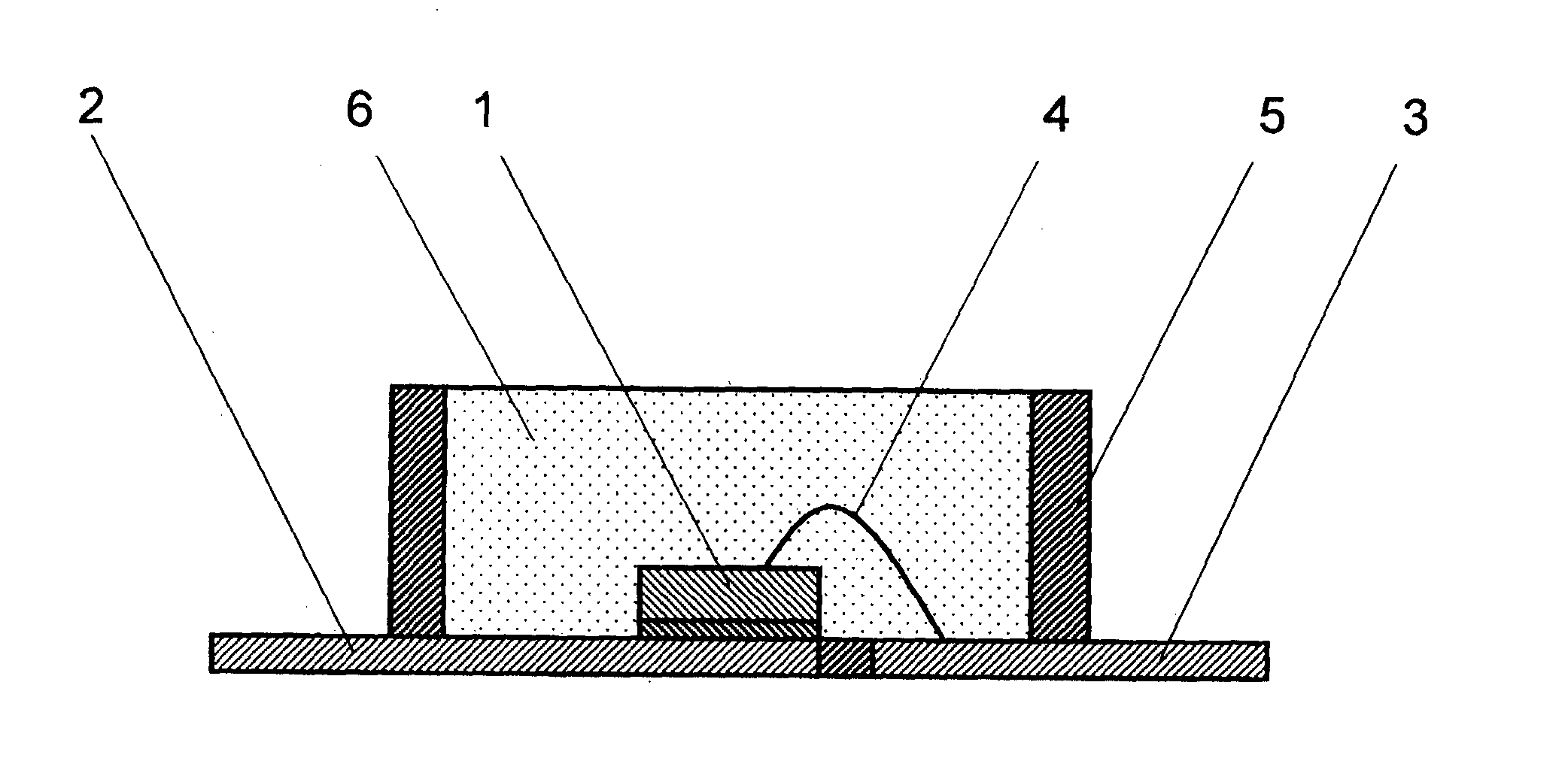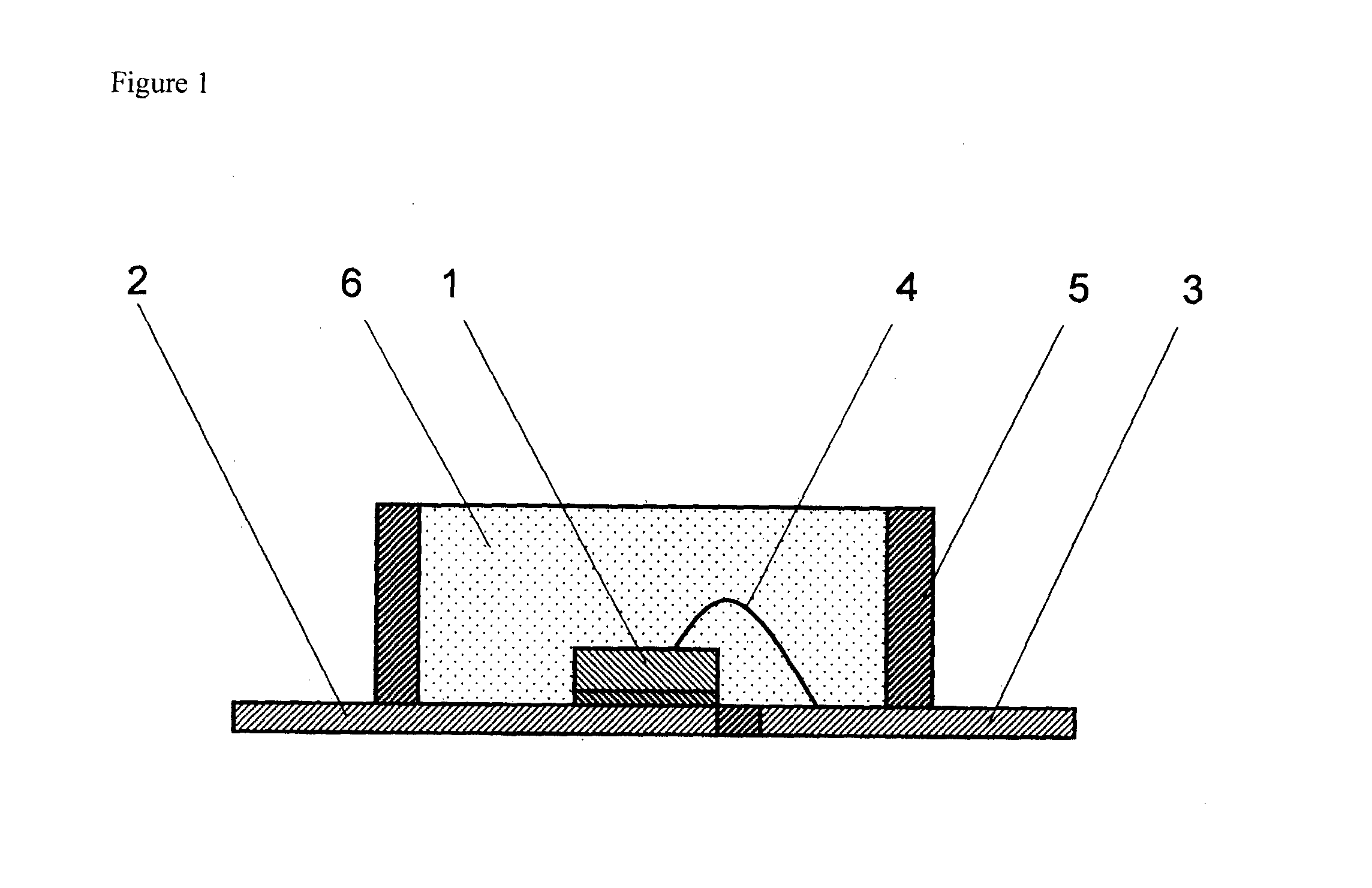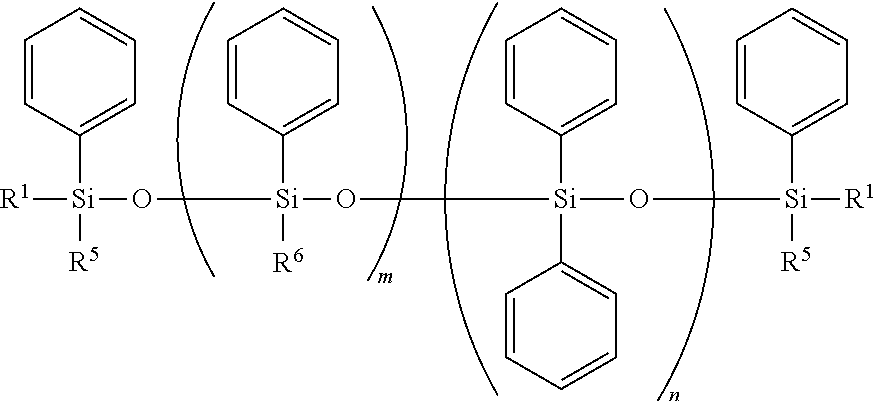Curable Silicone Composition, Cured Product Thereof, And Optical Semiconductor Device
- Summary
- Abstract
- Description
- Claims
- Application Information
AI Technical Summary
Benefits of technology
Problems solved by technology
Method used
Image
Examples
reference example 1
[0074]First, 400 g (2.02 mol) of phenyltrimethoxysilane and 93.5 g (0.30 mol) of 1,3-divinyl-1,3-diphenyldimethyldisiloxane were loaded into a reaction vessel and mixed in advance. Next, 1.74 g (11.6 mmol) of trifluoromethane sulfonic acid was added, and 110 g (6.1 mol) of water was added and heat-refluxed for 2 hours while stirring. The mixture was then distilled at atmospheric pressure by heating until the mixture reached 85° C. Next, 89 g of toluene and 1.18 g (21.1 mmol) of potassium hydroxide were added, and after the mixture was distilled at atmospheric pressure by heating until the reaction temperature reached 120° C., the mixture was reacted for 6 hours at this temperature. The mixture was then cooled to room temperature, and a neutralization was performed by adding 0.68 g (11.4 mmol) of acetic acid. The produced salt was filtered, and low boiling point substances were removed from the obtained transparent solution by heating under reduced pressure, thereby producing 347 g (...
reference example 2
[0075]First, 892.8 g (3.6 mol) of 1-naphthyltrimethoxysilane and 372.0 g (1.2 mol) of 1,3-divinyl-1,3-diphenyldimethyldisiloxane were loaded into a reaction vessel and mixed in advance. Next, 6.15 g (41 mmol) of trifluoromethane sulfonic acid was added, and 213.84 g (11.88 mol) of water was added and heat-refluxed for 2 hours while stirring. The mixture was then distilled at atmospheric pressure by heating until the mixture reached 85° C. Next, 435.6 g of toluene and 3.28 g (58.6 mmol) of potassium hydroxide were added, and after the mixture was distilled at atmospheric pressure by heating until the reaction temperature reached 120° C., the mixture was reacted for 6 hours at this temperature. The mixture was then cooled to room temperature, and a neutralization was performed by adding 3.524 g (58.7 mmol) of acetic acid. The produced salt was filtered, and low boiling point substances were removed from the obtained transparent solution by heating under reduced pressure, thereby produ...
reference example 3
[0076]First, 50 g (201 mmol) of 1-naphthyltrimethoxysilane was loaded into a reaction vessel and was heated and melted. Thereafter, 0.06 g (0.4 mmol) of trifluoromethane sulfonic acid was added. While the system was heated to 45 to 50° C., 9.3 g (154.9 mmol) of acetic acid was added in a drop-wise manner. After completion of drop-wise addition, the mixture was heated and stirred for 30 minutes at 50° C. The mixture was heated and low boiling point substances were distilled at atmospheric pressure until the reaction temperature reached 80° C. Thereafter, the mixture was cooled down to room temperature. 24.4 g (181.6 mmol) of 1,1,3,3-tetramethyldisiloxane was added in a drop-wise manner, and the mixture was heated to reach a reaction temperature of 45° C. Thereafter, 18 g of acetic acid was added drop-wise at 45 to 50° C. After completion of drop-wise addition, the mixture was heated and stirred for 30 minutes at 50° C. While the system was maintained at a temperature of 60° C. or les...
PUM
| Property | Measurement | Unit |
|---|---|---|
| Time | aaaaa | aaaaa |
| Percent by mass | aaaaa | aaaaa |
| Substance count | aaaaa | aaaaa |
Abstract
Description
Claims
Application Information
 Login to View More
Login to View More - R&D
- Intellectual Property
- Life Sciences
- Materials
- Tech Scout
- Unparalleled Data Quality
- Higher Quality Content
- 60% Fewer Hallucinations
Browse by: Latest US Patents, China's latest patents, Technical Efficacy Thesaurus, Application Domain, Technology Topic, Popular Technical Reports.
© 2025 PatSnap. All rights reserved.Legal|Privacy policy|Modern Slavery Act Transparency Statement|Sitemap|About US| Contact US: help@patsnap.com



